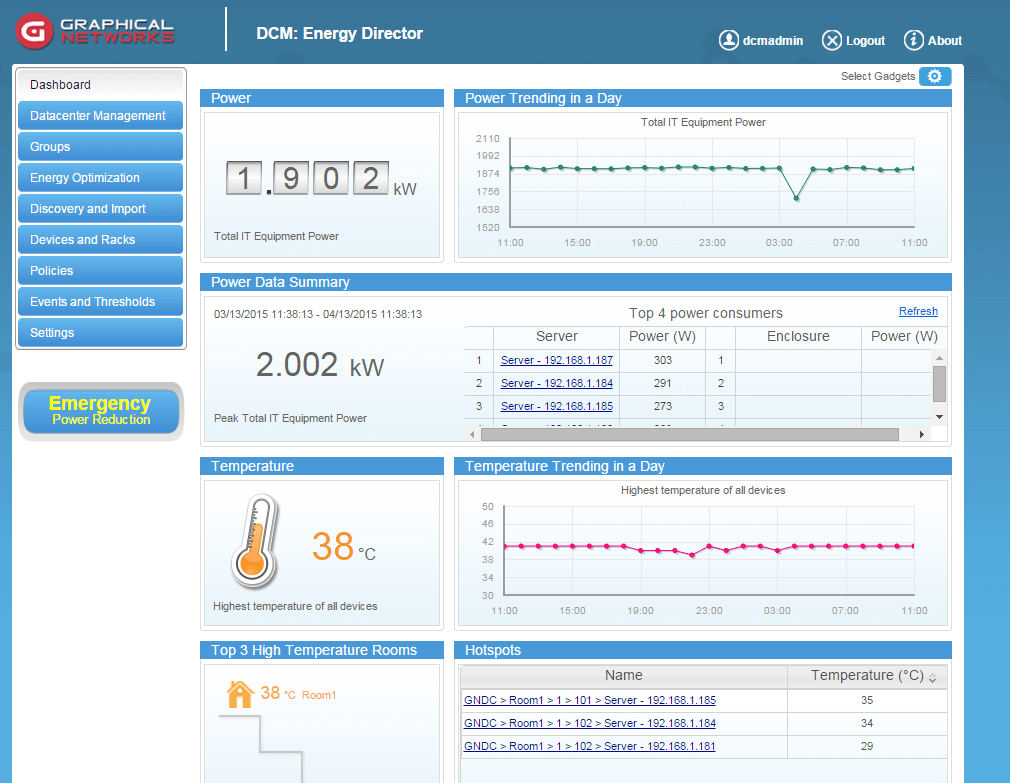 Data center power and cooling costs are expensive…and as infrastructures continue to expand, these costs are only going up. Because of solutions such as DCIM software, costs don’t have to keep skyrocketing. DCIM can give insights as to where power is being drawn by servers that aren’t performing any functions, for example, or true power consumption of rack units and so on. This has become so important that all federal data centers have been required to implement DCIM and lower PUE by 2018.
Data center power and cooling costs are expensive…and as infrastructures continue to expand, these costs are only going up. Because of solutions such as DCIM software, costs don’t have to keep skyrocketing. DCIM can give insights as to where power is being drawn by servers that aren’t performing any functions, for example, or true power consumption of rack units and so on. This has become so important that all federal data centers have been required to implement DCIM and lower PUE by 2018.
What is PUE?
Power usage effectiveness (PUE) is a metric that determines how energy efficient a data center is. The PUE number is determined by dividing the amount of power flowing into the data center by the actual power used to run the data center’s infrastructure.
What is DCIM?
Data Center Infrastructure Management (DCIM) is a set of processes designed to centralize information in a data center and, as a result, to deliver actionable insights about the data center. Because DCIM can cover the span of different functions within a data center, there isn’t a one-size-fits-all DCIM solution that will work for every organization: the type of DCIM an organization may need truly depends on the types of headaches and goals an organization has. Power monitoring, which can be used to lower PUE, is one function which some DCIM solutions may offer.
Can DCIM & Power Monitoring Actually Lower PUE?
Yes — with the right implementation. The Data Center Optimization Initiative recently released updated statistics on how its push to require all federal data centers use DCIM to lower PUE by 2018 is going.
How is it going?
The update indicates this level of automation is delivering: its increasing server utilization, optimizing energy usage, lowering PUE rates, and facility utilization.
The federal goal was 65% server utilization by the end of 2018; as of the update’s publication, the rate was already at 49%.
How Can DCIM Lower PUE?
DCIM can lower PUE in a number of ways — not just with power monitoring:
- DCIM can increase rack densities. Because floor plan space is an expensive asset, real-time insights about your power consumption allows you oversubscribe racks and increase your rack and density space. You also have less racks drawing power but not performing at capacity.
- DCIM can help you smoke out zombie servers. Statistics indicate that a whopping 1 in 3 servers qualify as ‘zombies’: drawing power but not doing anything at all. Find those servers, kick them to the curb, and lower PUE significantly.
- DCIM with power monitoring can help you lower cooling costs (and PUE). When you can continuously monitor devices for temperatures, you can raise the room temperature and lower costs.
- DCIM can help you map out the location and utilization of every server. Find underperforming servers and work with business teams to make sure that everything drawing power is running at maximum capacity.
- DCIM can help you with capacity planning. Stop buying, and powering, IT stuff your infrastructure already has or you just don’t need.

An example of power monitoring in netTerrain DCIM: this can be used to lower PUE.
Bottomline? When you implement DCIM, and especially DCIM with power monitoring, you’re at the threshold of seeing significant savings across the board: stop buying equipment you don’t need, stop powering equipment you’re not using or are underusing, stop wasting rackspace, and stop overspending on cooling costs when you don’t need to.
In our experience, the promise to lower PUE with DCIM isn’t far more than just hype. Data center managers who have used a DCIM software such as netTerrain combined with power monitoring have seen significant savings in power and cooling costs — by as much as 30%.